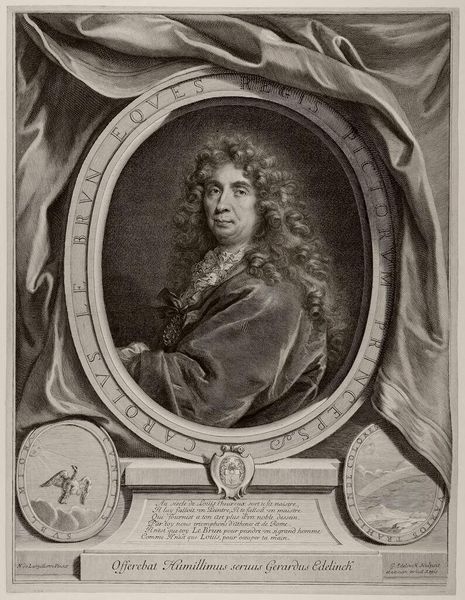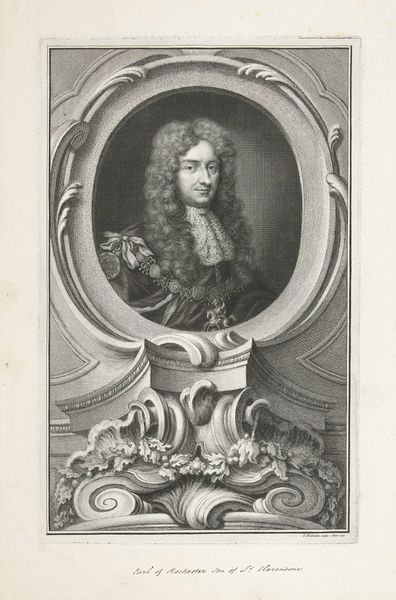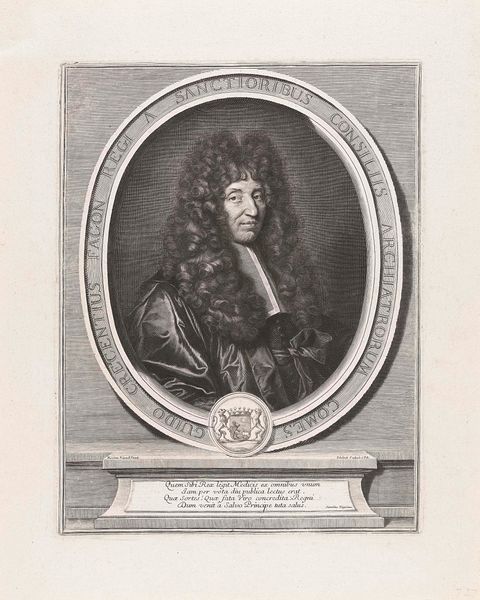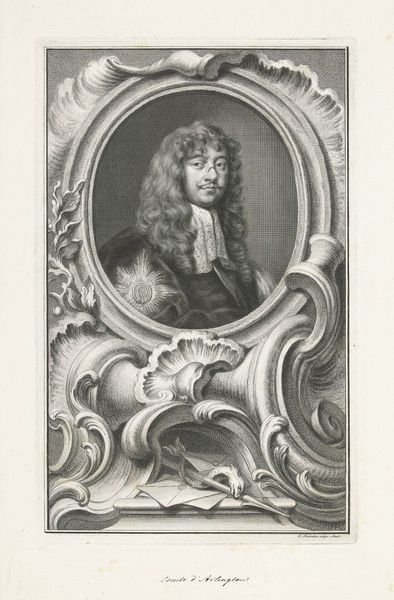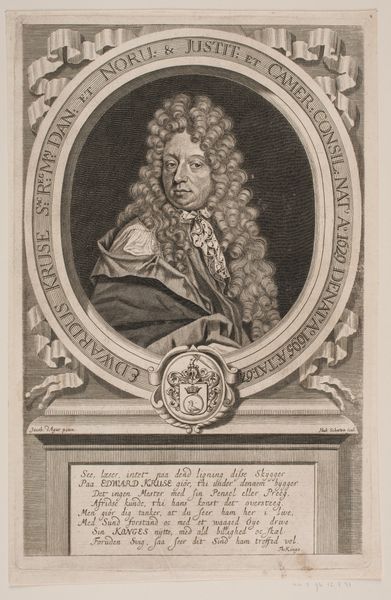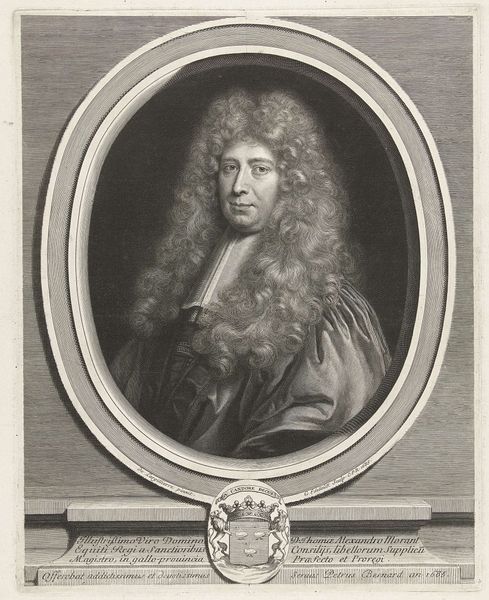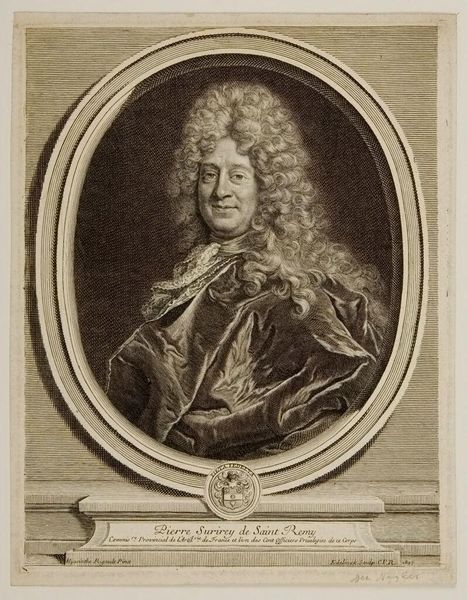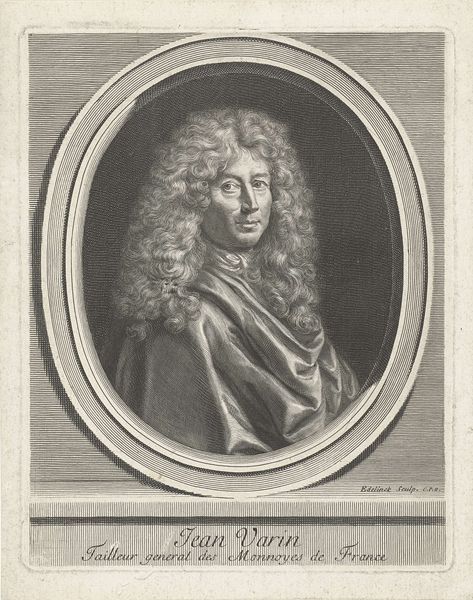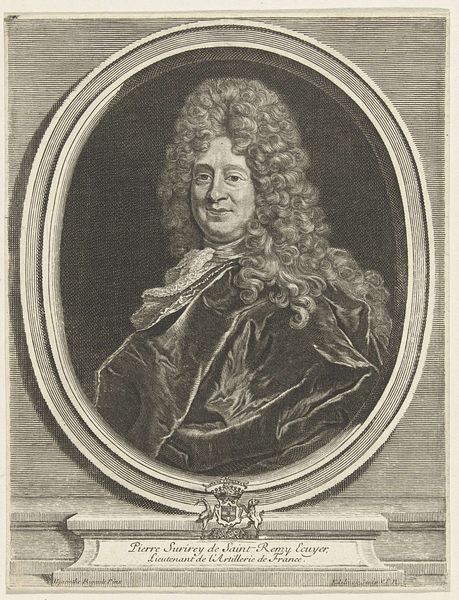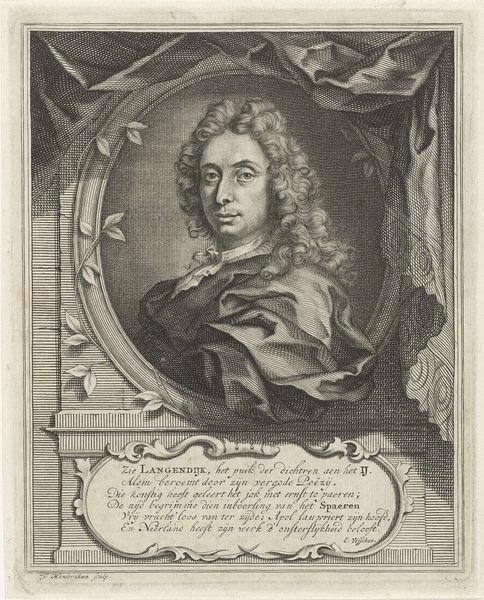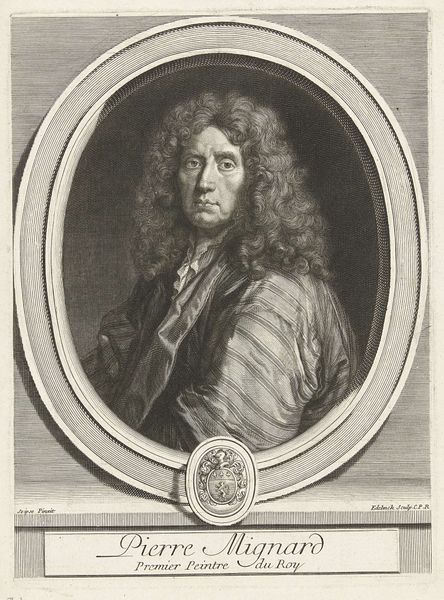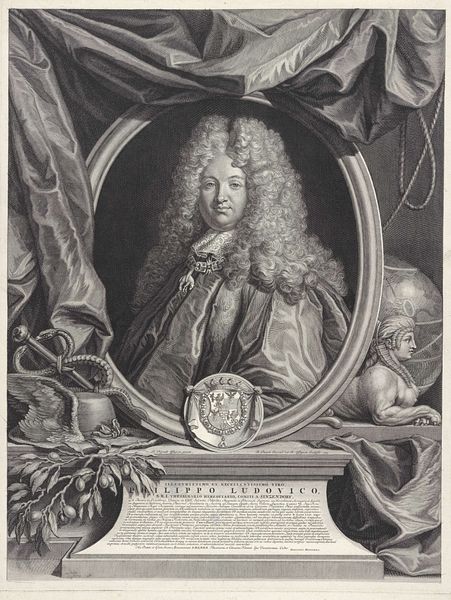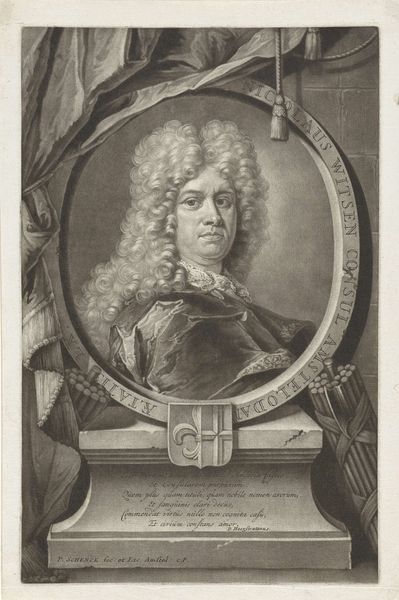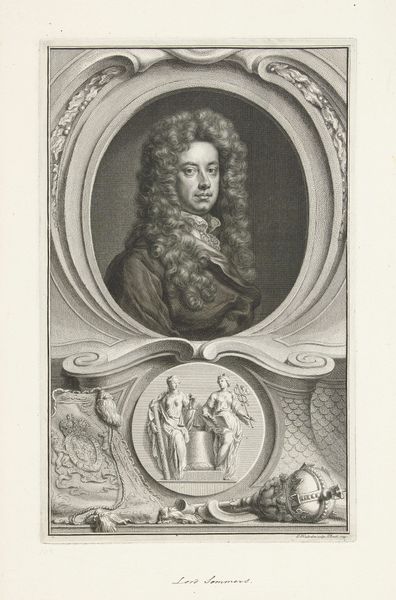
engraving
#
portrait
#
baroque
#
old engraving style
#
limited contrast and shading
#
history-painting
#
engraving
Dimensions: height 514 mm, width 397 mm
Copyright: Rijks Museum: Open Domain
Editor: So, here we have "Portrait of Charles le Brun," made sometime between 1666 and 1707 by Gérard Edelinck. It's an engraving. I'm struck by the formality of it all. All that precise line work! What stands out to you in this portrait? Curator: Well, it certainly whispers "grandeur," doesn't it? This isn’t just any portrait; it's a carefully constructed image designed to convey power and status. Notice the framing – the ornate oval, the billowing drapery. And the little allegorical scenes on either side. It’s like Edelinck isn't just showing us le Brun; he's telling us a story about him. Have you considered what that story might be? Editor: Not really! Other than he's an important guy, I guess. That wig alone says "important guy." But what are those little scenes about? Curator: Exactly! They add layers of meaning. One appears to show an eagle ascending, which may hint at artistic inspiration. The other depicts a landscape, possibly symbolizing Le Brun’s impact on French art. Remember, Le Brun was incredibly influential during Louis XIV's reign – directing the Academy, essentially shaping the "French style." So Edelinck is capturing not just his likeness but his legacy. Don't you think that's rather poetic, in its own controlled Baroque way? Editor: It is pretty clever when you point it out! So much more than just a wig and a fancy frame. Curator: Precisely! It’s a reminder that even seemingly straightforward portraits can be rich tapestries woven with symbolism and cultural context. Art reveals history, always, in its special way.
Comments
No comments
Be the first to comment and join the conversation on the ultimate creative platform.
